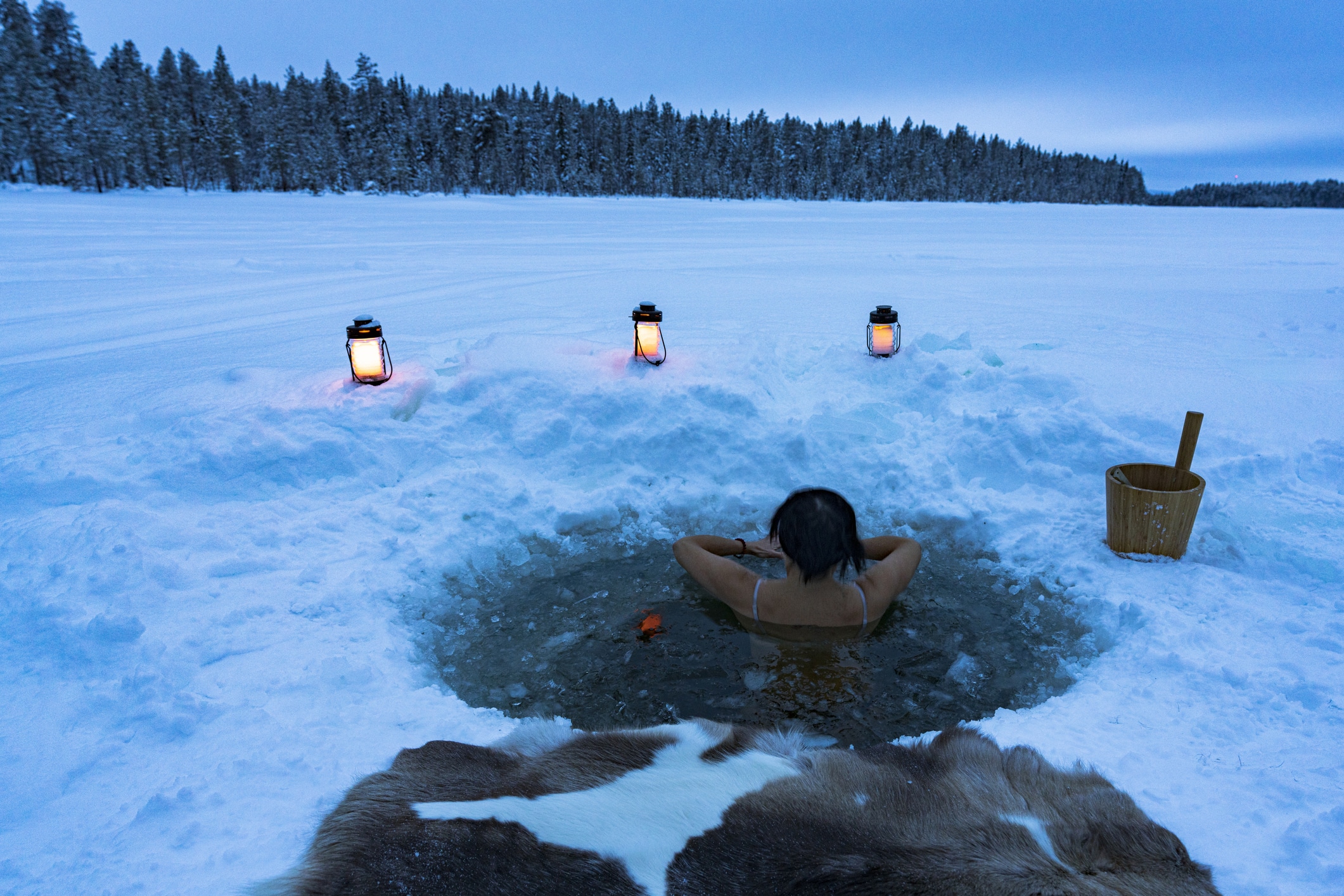Recently, there has been a surge of interest in cold plunges. Here are the benefits and latest research on their effectiveness.
By Peter Engelbrecht
You begin the descent.
As your feet and legs go into a rapid shiver, all you can think about is the wave of freezing cold climbing up your stomach.
Finally you are up to your neck in ice. We are of course talking about cold plunges or Ice Baths.
Loading...
Ice baths have been used for decades by athletes, particularly those involved in endurance sports, as a way to promote recovery and reduce muscle soreness after intense exercise. Recently, there has been a surge of interest in ice baths, not just among elite athletes, but among fitness enthusiasts and the general population as well. Let’s explore the benefits of ice baths and look at the latest research on their effectiveness.
What are Ice baths?
Ice baths, also known as cold water immersion, involve submerging the body in cold water for a set amount of time. The water temperature is typically around 50°F (10°C) or lower, and the duration of the bath can range from a few minutes to 20 minutes or more. Some people also add ice to the water to make it even colder.
Reduces Inflammation
One of the main benefits of ice baths is their ability to reduce inflammation. During intense exercise, the body produces a lot of waste products, including lactic acid, which can build up in the muscles and cause soreness. Cold water immersion helps to constrict blood vessels and reduce blood flow to the affected area, which can help to reduce inflammation and promote healing.
Speeds Up Recovery
Ice baths can also help to speed up recovery after exercise. When you immerse your body in cold water, your blood vessels constrict, which helps to flush out metabolic waste products and reduce inflammation. This, in turn, helps to promote healing and reduce muscle soreness, allowing you to recover more quickly from your workouts.
Enhances Immune Function
Research has also shown that cold water immersion can enhance the immune function. Exposure to cold water can stimulate the production of white blood cells, which are responsible for fighting off infections and diseases. This means that regular ice baths could help to boost your immune system and make you less susceptible to illness.
Improves Mood
In addition to its physical benefits, cold water immersion can also have a positive effect on your mood. When you immerse your body in cold water, your body releases endorphins, which are natural mood enhancers. This can help to reduce stress and improve your overall sense of wellbeing.
Latest Research
While the benefits of ice baths have been known for some time, there is still ongoing research into their effectiveness. Some of the latest research has been done by Andrew D. Huberman, an American neuroscientist and tenured associate professor in the Department of Neurobiology, Psychiatry and Behavioral Sciences at Stanford University School of Medicine, who has made contributions to the fields of brain development, brain plasticity, neural regeneration and repair.
During an interview with the podcaster Joe Rogan, Huberman recalls a study done by the European Journal of Physiology which was the first study of its kind that probed the effects of cold plunges and the neurochemical impacts on the brain. Huberman states: “When you go into the cold for one to two minutes and it is shockingly cold where you have to catch your breath and stabilize your mind, that invokes a dopamine, epinephrine and nor-epinephrine release.”
These three neurotransmitters collectively are referred to as catecholamines. There is a huge spike and dopamine levels that are present in the brain after cold exposure remain for up to four hours later.
Ice Baths vs. Active Recovery
A recent study compared the effects of ice baths to those of active recovery (light exercise) on muscle soreness and recovery in elite athletes. The study found that while both ice baths and active recovery were effective at reducing muscle soreness, active recovery was more effective at promoting recovery and reducing inflammation.
Frequency of Ice Baths
Another study looked at the frequency of ice baths and its effect on recovery in athletes. The study found that while daily ice baths did help to reduce muscle soreness and improve recovery, there was no significant difference between daily ice baths and ice baths taken every other day.
Timing of Ice Baths
Timing may also be an important factor when it comes to the effectiveness of ice baths. A study published in the Journal of Physiology found that taking an ice bath immediately after exercise was less effective at reducing inflammation and promoting recovery than waiting a few hours to take an ice bath.
Duration of Ice Baths
Finally, the duration of the ice bath may also play a role in its effectiveness. A study published in the Scandinavian Journal of Medicine & Science in Sports found that longer and warmer ice baths (20 minutes) were more effective at reducing muscle soreness and promoting recovery than shorter and colder ice baths (two minutes).
Loading...
